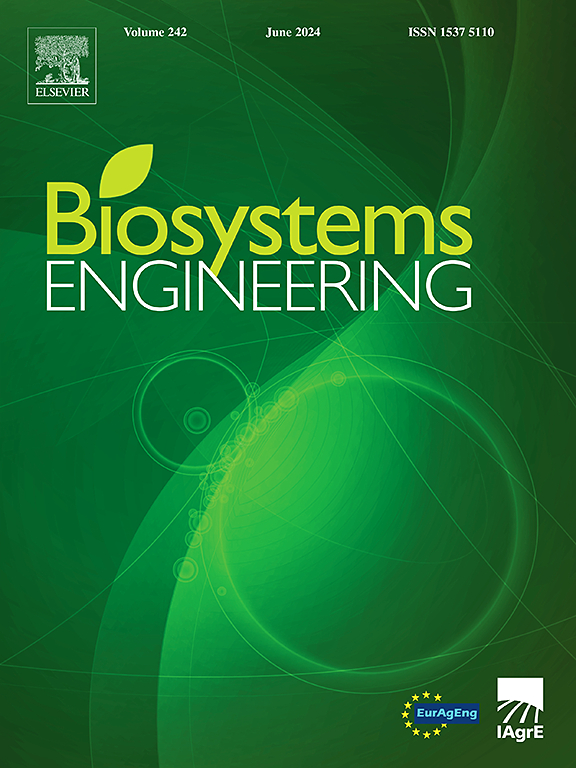Prediction of droplet size and spreading parameter by rotary cup atomisation using dimensional analysis
IF 5.3
1区 农林科学
Q1 AGRICULTURAL ENGINEERING
引用次数: 0
Abstract
This study experimentally investigated the atomisation performance of a rotary cup atomiser, and atomisation parameters (volume median diameter and spreading parameter) were modelled using dimensional analysis. Two types of dimensional correlations were identified from the 126 experimental points for the training dataset. The first type employed multiple linear regression to derive a monomial (power) form equation, while the second used symbolic regression to establish a non-monomial form. The latter more effectively captured the nonlinear characteristics of droplet formation, resulting in higher prediction accuracy, with droplet sizes across the test dataset falling within a ±15 % relative error range. The droplet size distribution was modelled using the two-parameter Rosin-Rammler distribution function, and the spreading parameter was correlated to the main dimensionless parameters through multiple linear regression and symbolic regression. The non-monomial form demonstrated superior accuracy compared to the monomial form. Thus, the combination of dimensional analysis and symbolic regression provided a physically sound and user-friendly approach for the accurate prediction of droplet size and its distribution.
利用量纲分析预测旋转杯雾化液滴尺寸和扩散参数
本研究对旋转杯雾化器的雾化性能进行了实验研究,并利用量纲分析对雾化参数(体积中值直径和扩散参数)进行了建模。从训练数据集的126个实验点中识别出两种类型的维度相关性。第一类采用多元线性回归推导单项式(幂)形式方程,而第二类采用符号回归建立非单项式形式方程。后者更有效地捕获了液滴形成的非线性特征,从而提高了预测精度,整个测试数据集的液滴尺寸相对误差范围在±15%以内。采用双参数Rosin-Rammler分布函数对液滴粒径分布进行建模,并通过多元线性回归和符号回归将扩散参数与主要无量纲参数进行关联。与单项形式相比,非单项形式表现出更高的准确性。因此,量纲分析和符号回归的结合为准确预测液滴大小及其分布提供了一种物理上合理且用户友好的方法。
本文章由计算机程序翻译,如有差异,请以英文原文为准。
求助全文
约1分钟内获得全文
求助全文
来源期刊

Biosystems Engineering
农林科学-农业工程
CiteScore
10.60
自引率
7.80%
发文量
239
审稿时长
53 days
期刊介绍:
Biosystems Engineering publishes research in engineering and the physical sciences that represent advances in understanding or modelling of the performance of biological systems for sustainable developments in land use and the environment, agriculture and amenity, bioproduction processes and the food chain. The subject matter of the journal reflects the wide range and interdisciplinary nature of research in engineering for biological systems.
 求助内容:
求助内容: 应助结果提醒方式:
应助结果提醒方式:


